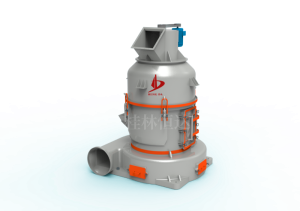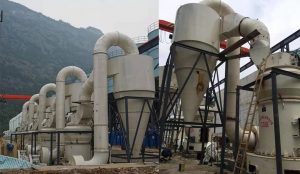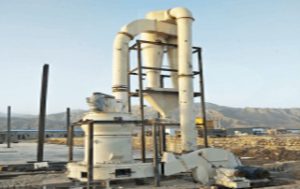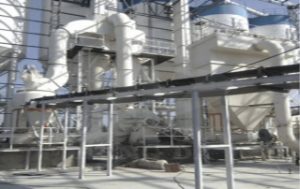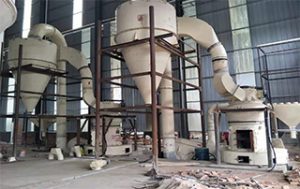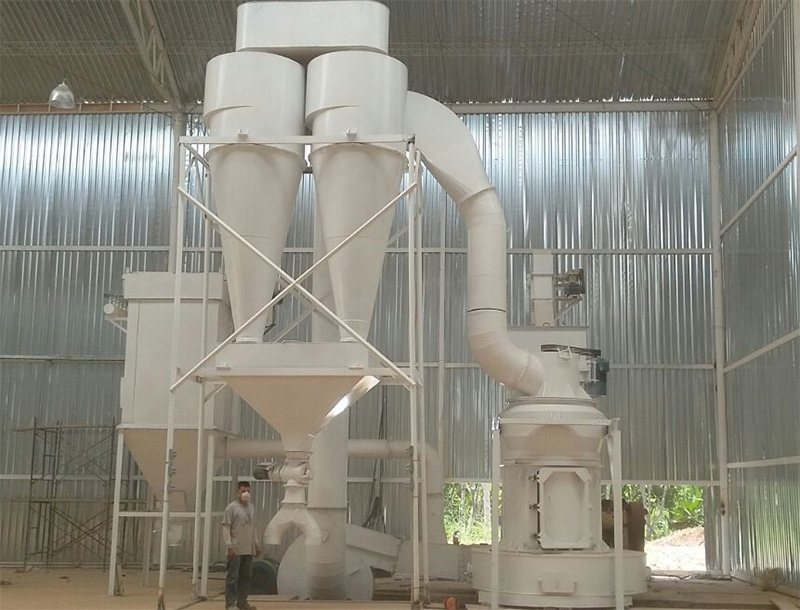Ball mill is the key equipment for crushing materials after they are crushed. It is widely used in cement, silicate products, new building materials, refractories, chemical fertilizer, beneficiation of black and non-ferrous metals, glass ceramics and other production industries, and dry or wet grinding of various ores and other grindable materials. Effectively controlling the grinding fineness of the ball mill is an important factor to directly reduce the cost and improve the economic benefit. Understanding the factors affecting the grinding fineness of ball mill is a necessary prerequisite for controlling the grinding fineness. Then, what are the factors affecting the grinding fineness of the ball mill?
Working principle of ball mill
Ore hardness
Reasonable ore blending shall be carried out in production to make the ore size as uniform as possible, and the proportion of massive and powdery ore shall be reasonable and stable. In addition, at the belt feeding place of the ball mill, the belt may leak ore due to long-term wear, and most of the leaked ore is fine ore. this part of the leaked ore must be added to the ball mill as soon as possible. If it is stacked for a long time and added intensively, it will cause uneven ore feeding for ball milling and unstable production.
Feed water size of ball mill
When the feed water of the ball mill increases, the grinding concentration becomes thinner and the grinding fineness becomes coarser. On the contrary, the feed water of the ball mill decreases, the grinding concentration increases, and the grinding fineness becomes fine.
Flushing water size at the discharge port of ball mill
The flushing at the discharge port of the ball mill becomes larger, the overflow flow becomes thinner, and the overflow fineness becomes thinner. On the contrary, the flushing at the discharge port of the ball mill becomes smaller, the overflow becomes thicker and the overflow fineness becomes thicker. Therefore, under other conditions, including constant ore quantity, to improve the grinding fineness, the feed water of the ball mill can be reduced and the flushing at the discharge port of the ball mill can be increased. It is better to adjust these two conditions at the same time to ensure that the change of pulp volume caused by the adjustment of grinding fineness and the fluctuation of flotation are reduced as much as possible.
Blade wear
After the blade is worn, it is equivalent to the reduction of sand return, resulting in coarsening of grinding fineness. In addition, if the blades are seriously worn, the service life of the classifier will be affected. Therefore, check the blade wear in time and replace the worn blades in time.
Classifier opening
Some concentrators do not adjust the opening size of the classifier well during equipment installation, and the operator does not pay much attention during operation, which will virtually affect the grinding operation. The lower opening of the classifier is low and the ore sedimentation area is large, so the return sand volume increases and the grinding fineness is relatively fine. The lower opening of the classifier is large, the ore sedimentation area is large, and the water flow is relatively gentle, so the return sand volume increases and the grinding fineness is relatively fine. Similarly, when the opening on the classifier is low and large, the amount of returned sand increases and the grinding fineness becomes relatively fine. Otherwise, on the contrary, the grinding fineness becomes coarser.
Height of overflow weir of classifier
The height of the overflow weir of the classifier affects the size of the ore sedimentation area. In production, the height of the overflow weir of the classifier can be adjusted appropriately according to the requirements of grinding fineness. If the grinding fineness is required to be thinner, angle iron with a certain height can be welded along both sides of the classifier, and the height of the overflow weir of the classifier can be adjusted by inserting wood plates. Sometimes, the height of overflow weir can be naturally increased after long-term accumulation of slime.
Crushing particle size
In production, the ball mill must supervise the crushing system. If the feed particle size of the ball mill changes during reproduction, it must be fed back to the crushing workshop immediately. The final requirement is that the finer the crushing particle size, the better, “more breaking and less grinding” to save production costs.
In the grinding production of ball mill, effective control of grinding fineness can ensure production efficiency and improve economic benefits. If you have any suggestions or questions, please leave a message.
